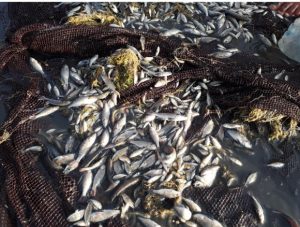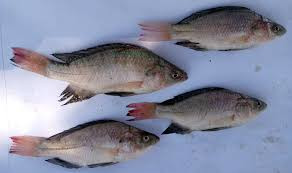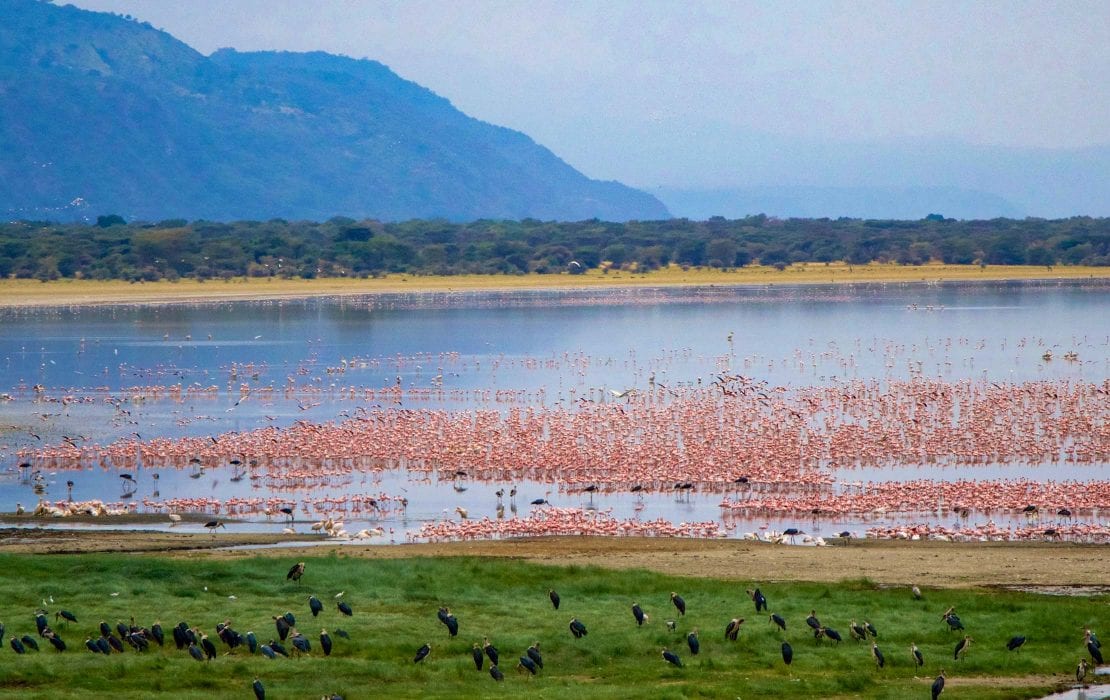The species Oreochromis amphimelas, commonly known as Manyara tilapia, is a species of tilapia cichlid endemic to North Central Tanzania. It is found in Lake Manyara and several other saline lakes with closed basins, including Lakes Eyasi, Kitangiri, and Singida. The species has a unique appearance, with a small head, upwardly angled mouth, and few gill rakers, and is a maternal mouthbrooder.
Oreochromis amphimelas is heavily fished where it is found and is threatened by the stocking of exotic tilapia species, which have been reported to hybridize with native species. The lake is a closed basin with fluctuating salinity and alkalinity, and this tilapia population booms during the wet season when the conditions are more favorable. The species feeds on plankton, particularly cyanobacteria and other microalgae species.
Lake Kitangiri, another closed saline lake in Tanzania, is also home to a population of Oreochromis amphimelas. This lake is relatively small and has the potential to serve as a gene bank and provide microhabitats for feeding and breeding of fish, including rare and endangered species. The lake’s hydrographic characteristics, including the interaction of seasonal rivers and permanent water input, have influenced its aquatic ecosystems.
 The researcher from the Sokoine University of Agriculture (SUA) Dr. Cyrus Rumisha from the Department of Animal, Aquaculture and Range Sciences, and Mr. Bonus Morandus from the Department of Biosciences studied the Manyara tilapia (Oreochromis amphimelas), native to the Saline Rift Valley Lakes in north-central Tanzania, and noticed a recent population declines mainly due to overfishing and severe droughts. Combined with the introduction of Nile tilapia (Oreochromis niloticus), which poses a risk of hybridization, could potentially erode essential genetic traits necessary for their survival in the saline environment.
The researcher from the Sokoine University of Agriculture (SUA) Dr. Cyrus Rumisha from the Department of Animal, Aquaculture and Range Sciences, and Mr. Bonus Morandus from the Department of Biosciences studied the Manyara tilapia (Oreochromis amphimelas), native to the Saline Rift Valley Lakes in north-central Tanzania, and noticed a recent population declines mainly due to overfishing and severe droughts. Combined with the introduction of Nile tilapia (Oreochromis niloticus), which poses a risk of hybridization, could potentially erode essential genetic traits necessary for their survival in the saline environment.
The analysis of partial cytochrome oxidase subunit I sequences revealed six distinct haplotypes for Manyara tilapia and three for Nile tilapia. These haplotypes formed separate clusters for each species, with no shared or closely related haplotypes, indicating limited or no transfer of mitochondrial DNA between them.
Additionally, we found evidence of restricted genetic connectivity among Manyara tilapia populations in the Saline Rift Valley Lakes, with populations in Lakes Manyara and Eyasi displaying limited genetic exchange among themselves and with those in other Saline Rift Valley Lakes. The findings highlight the importance of sustained conservation efforts in protected areas around Lake Manyara and Lake Eyasi to safeguard the unique populations of Manyara tilapia in these lakes.
Limited connectivity with other Saline Rift Valley Lakes suggests that conservation initiatives in these areas may have a limited impact on these lakes. Thus, future efforts should prioritize stocks in Lakes Kindai, Singida, and Sulunga, focusing on protecting fish refugia, particularly the rivers connected to these lakes, which serve as critical habitats during the dry season and as important reservoirs for replenishing these populations.
Oreochromis amphimelas populations in Tanzanian saline lakes are of interest for their unique biology and play important ecological roles within the saline lake ecosystems. As a primary consumer, it contributes to the regulation of lower trophic levels, influencing the abundance and distribution of algae and other aquatic organisms.

For more information CLICK HERE
Morandus, B. M. and Rumisha, C. (2024). Lack of mitochondrial introgression and limited genetic connectivity among Manyara tilapia (Oreochromis amphimelas) populations in Tanzanian Saline Rift Valley Lakes. African Journal of Ecology, 62, e13267. https://doi.org/10.1111/aje.13267

The Department of Animal, Aquaculture, and Range Sciences
The College of Agriculture, Sokoine University of Agriculture
Share this page




